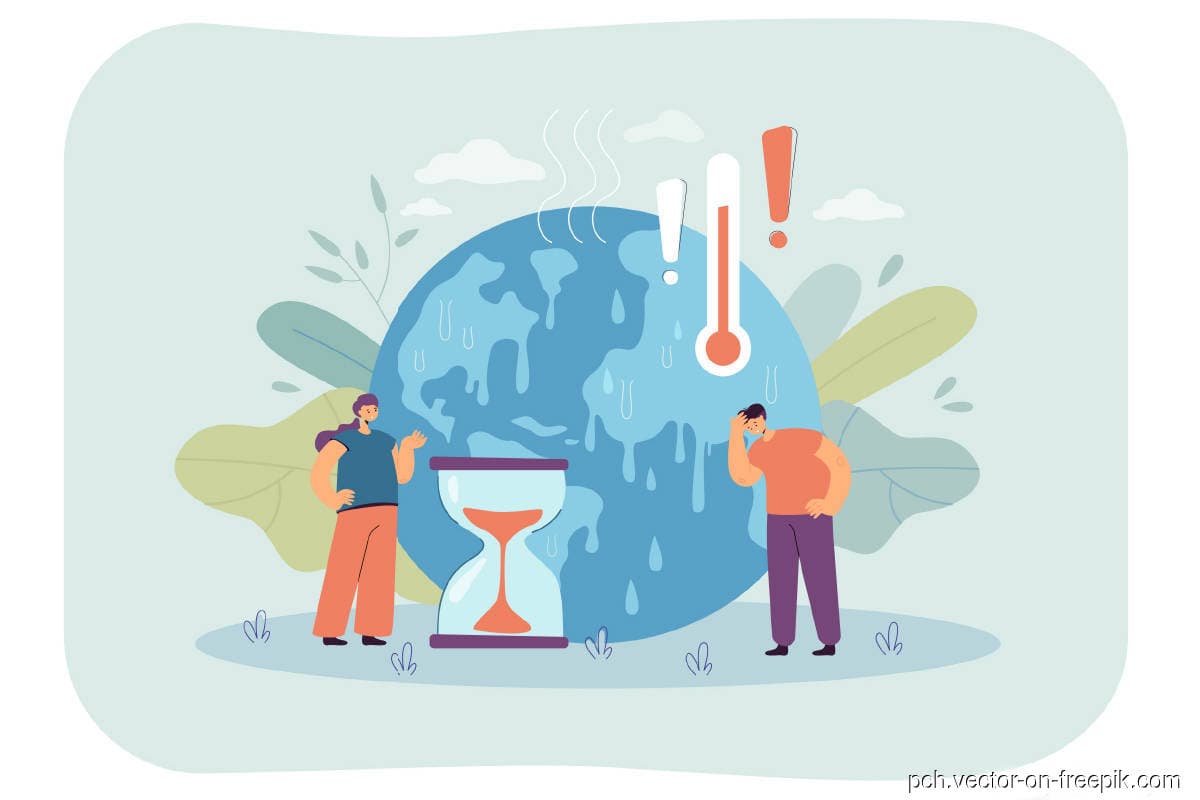
This article first appeared in The Edge Malaysia Weekly on May 16, 2022 - May 22, 2022
Malaysia is at a crucial stage in its transition towards becoming a low-carbon and climate-resilient economy. If we are to achieve this, financing needs to shift up a gear and evolve not only by increasing investment in carbon-efficient technologies and green projects, but also incentivising existing hard-to-abate sectors to become greener at a reasonable cost.
The imperative to tackle climate change is growing more urgent. The United Nations’ Intergovernmental Panel on Climate Change warned last month that it is “now or never” if the world is to stave off environmental catastrophe.
Last September, Prime Minister Ismail Sabri Yaakob unveiled Malaysia’s goal to become carbon neutral as early as 2050, putting us ahead of many of our Southeast Asian neighbours. The government has committed to stopping the construction of new coal-fired power plants and to roll out carbon pricing and a carbon tax.
These are major shifts for Malaysia. We rely on coal for 37% of our power generation and demand has risen substantially over the past decade as the population has grown and become more urbanised. This is a trend that will continue. We are already seeing natural gas shortages in Peninsular Malaysia, which houses the energy and industrial sectors, while Sarawak and Sabah in Borneo will need more energy to fuel their growing infrastructure and industrial sectors.
With the country shifting gear to accelerate its zero-carbon ambitions, sectors such as energy, transport, shipping, aviation, manufacturing, infrastructure and agriculture need to embark on complex and long-term transformations to reduce their carbon output.
Carbon-intensive industries will need transition finance to help them start making the long-term changes to a greener future, particularly those that cannot move to net-zero emissions in the short term because they lack low-carbon alternatives that are economically or technically feasible.
Transition bonds and loans bridge the gap between traditional and sustainable financing as businesses begin their journey to a more sustainable future.
However, despite rapid growth in recent years, transition bonds and loans have struggled to make it into the mainstream, held back by the lack of an agreed set of standards for rating such instruments.
Sustainability-linked loans (SLLs) or bonds (SLBs) are a relatively new, but rapidly expanding, entrant into the environmental, social and governance (ESG) debt arena. They typically include pricing adjustments if the borrower achieves specified sustainability or ESG targets. For example, lowering carbon emissions intensity. Achievement of the agreed targets results in financiers agreeing to accept a lower return in exchange.
Borrowers can also be penalised with an increase in interest rates if they fail to achieve their agreed targets. These cost incentives encourage greater carbon efficiency and strengthen the resilience of borrowers against climate change risks. Bank lenders who provide these products are also better positioned to reduce their exposure to climate-related systemic risks such as higher capital costs for credit extended to carbon-intensive sectors.
Financial institutions need to become transition experts on a very granular, sectoral level. Banks not only need to carry out specific analysis of transition pathways, but must also deepen their understanding of their clients’ operations and supply chains and how those businesses are set to transition.
But there are currently stumbling blocks to transition finance, which banks cannot solve on their own. Investors struggle to price risk systematically and managers are increasingly wary of falling victim to “greenwashing”, the practice of dishonestly describing environmentally destructive projects as sustainable to access the pool of green investment capital.
The solution is a transparent system that defines and rates environmental risk in the same way that agencies like Moody’s Corporation and S&P Global Ratings categorise and rate financial risk. Work is being done on creating these systems around the world.
The European Union has led the way but other jurisdictions are also developing guidelines. This includes Asean, which has announced its support for a regional Asean Taxonomy for Sustainable Finance to serve as the common language for sustainable finance while complementing the national sustainability initiatives of its members.
It is important that taxonomies are an integral part of Malaysia’s green finance ecosystem if it is to improve its sustainability performance. Bank Negara Malaysia published the Climate Change and Principle-based Taxonomy (CCPT) to help financial institutions assess and categorise economic activities according to the extent to which they meet climate objectives and promote the transition to a low-carbon economy.
Meanwhile, as part of Malaysia’s journey to a net-zero economy, it needs to better integrate ESG considerations into its assessment of broader investment risks, facilitate transition finance and encourage greater transparency on sustainability-related data and reporting standards.
The rising importance of transition finance, and the role of banks in achieving a just and equitable transition, is particularly important for emerging markets. If the price of failure is unthinkable suffering, the rewards of success are substantial. International Monetary Fund (IMF) studies show that rising carbon prices and increased investment in green projects could lift global GDP by 0.7 percentage point a year and create millions of new jobs.
Omar Siddiq is CEO of HSBC Bank Malaysia
Save by subscribing to us for your print and/or digital copy.
P/S: The Edge is also available on Apple's AppStore and Androids' Google Play.